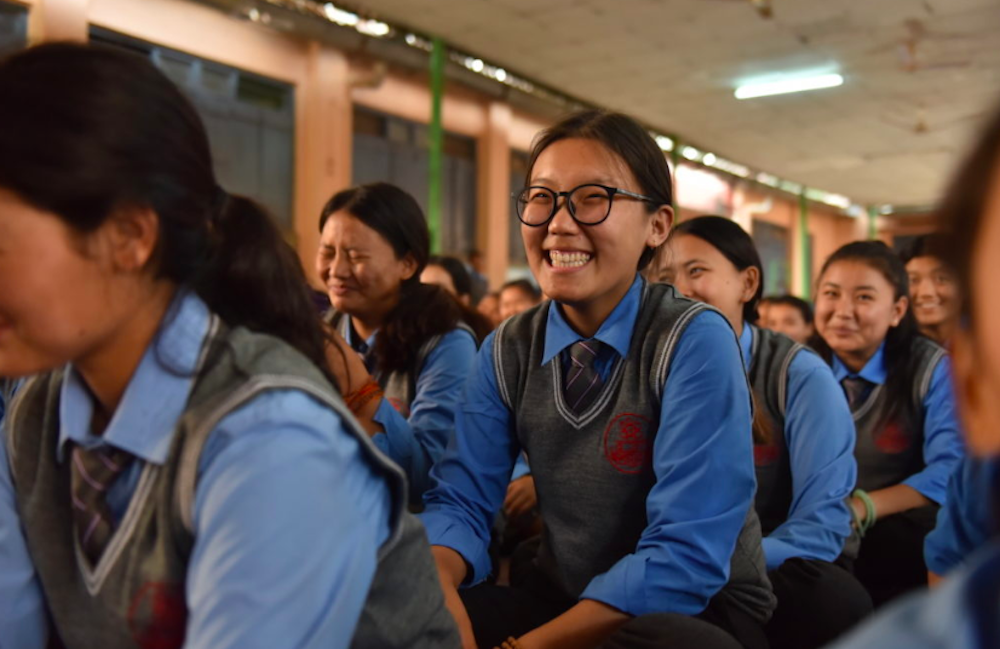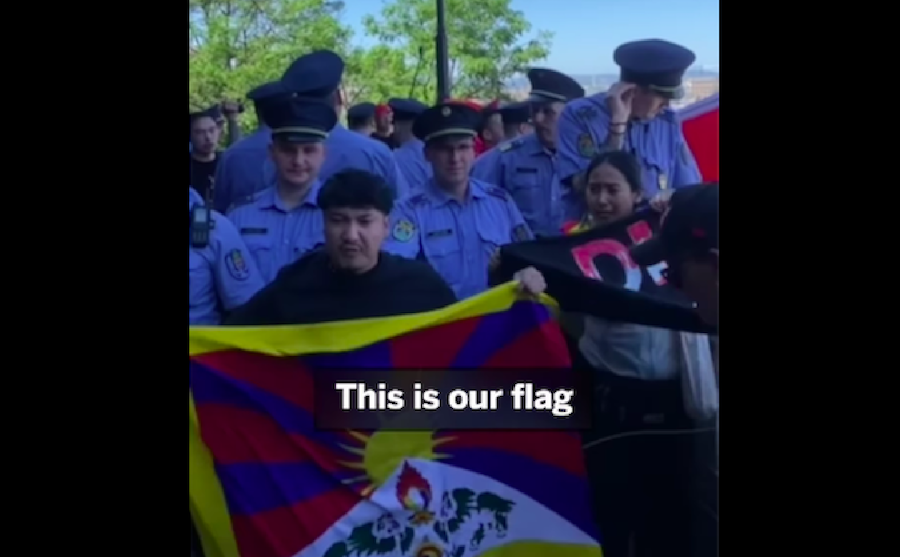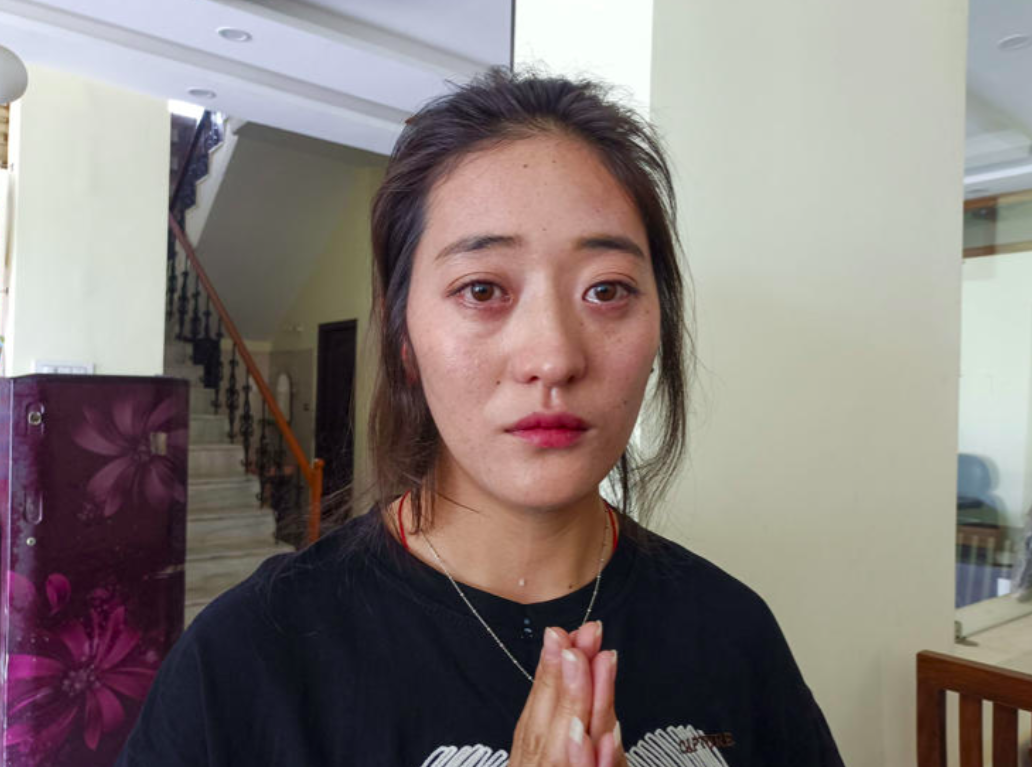By MICHAEL HUEBNER
Thundering blasts from 10-foot-long horns, accompanied by drums, cymbals and the shrill clarion of the double-reed Tibetan gyaling greeted visitors to the Birmingham Museum of Art on Sunday.
Seven Tibetan Buddhist monks dressed in purple robes and wearing yellow ceremonial hats chanted Tibetan prayers and mantras, some in deep vocal tones. Two more performed the Black Hat Dance. They were consecrating the space for the mandala, or sand painting, that they were about to create in conjunction with the museum’s “Desire and Devotion” exhibition on the art of India, Nepal and Tibet.
The five-foot-square art work will be constructed in six days by the group, which hails from the Drepung Loseling monastery in southern India. Actually crushed marble colored with vegetable dyes, the sand will be meticulously funneled into a pattern on a table in the center of the museum lobby. It will be comprised of sacred images and concentric circles and squares.
This particular mandala is called “Akshobya,” a Sanskrit word that means “unshakable” or “indestructible.”
The mandala belongs to the Vajrayana or Tantric practice, said Geshe Chogyal through translator Tenzin Legden. Chogyal, who left Tibet when he was 20 after the Chinese takeover of his homeland in 1959, was overseeing the mandala’s construction.
“Buddha Akshobya helps to purify one’s actions and bring a calm, peaceful mind,” he said. “It is meant to bring healing and protection to the community and the world at large.”
One of a series of Akshobya mandalas, it is similar to those the monks created at Ground Zero in New York and at the Smithsonian Institution in Washington immediately after Sept. 11, 2001, at the Dalai Lama’s request.
“His Holiness made a phone call to Atlanta, where the (Drepung Loseling) office is, and told them to make as many as possible of this particular mandala, because this deity is meant to remove negative energy and obscurations,” said Chogyal.
The mandala is one of numerous designs in the monks’ repertoire. Tenzin Deshek, a native Tibetan monk who heads the Losel Maitri Buddhist congregation in Birmingham, is a sand mandala veteran. He says “mandala” means “circle” in Sanskrit and can represent the universe as well as depict deities or sacred objects.
“All mandalas look similar, but different mandalas have different deities,” Deshek said. “This mandala belongs to the unshakable Buddha. This is his palace. There might be a lotus, or vajra (sword) or Tibetan letters or syllables. If they have more time, there will be more detail.”
Support for home:
Legden, who travels with the group, said the monks hope to raise awareness of Tibetan culture and garner support for the dwindling Tibetan population in Tibet.
“Right now in Tibet there are more Chinese than Tibetans, and there are no human rights for Tibetans,” he said. “We’re trying to accumulate more support for Tibet’s freedom and at the same time share Tibetan culture with others.”
He said money raised from performances, mandalas and gift items is used for education, food and other necessities for displaced Tibetans living in India and Nepal.
Donald Wood, the museum’s curator of Asian arts, says the Drepung Loseling group’s visit is well-suited to the current “Desire and Devotion” exhibition.
“We like to keep things in context if we can,” Wood said. “It’s the fourth time the monks have been to the museum, and this will be the third mandala they’ve done. We’re delighted to have them, and they always bring in a crowd.”
Following Sunday’s ceremony, an outline was drawn to guide the mandala’s construction. The museum lobby will be open today through Saturday for public viewing of the work’s progress. As a symbolic representation of impermanence, it will be destroyed at a closing ceremony on Saturday at 2:30 p.m. The sand will then be swept up and deposited in a nearby river or stream.









